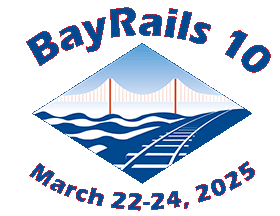

 |
BayRails 10 |  |

Jim Radkey The BNSF Pink Lady Subdivision is the born again connection between Boise ID and Sacramento CA. Known for its unusual pink color of the earth you find when you dig a hole This route was inherited by the Burlington Northern Santa Fe (BNSF) from mergers (Take Overs) of Burlington Northern (BN) and (Fire sale) of the Great Northern (GN). BN was planning to abandon the route and sell the track to a scrapper when the discovery of Pink Unobtainium (PU) was made in 1975. Well they changed their minds! The actual BNSF PLSD is a HO scale, freelance mountain railroad that occupies a 21 by 25 foot California basement (a garage) and was designed with operations in mind. The track work is code 83 flex track laid on cork, pink foam and plywood. The layout is controlled by NCE DCC and wireless throttles. There are 5 decks, (3 are staging) of track work that flows around the room in what John Armstrong refers to as a, spiral peninsula scheme. The track work starts and ends in big looped staging areas. The mainline run is about 300 ft. There is 3 long double track/passing sidings, a ten track yard, a two turn helix, and a branch line. There are 4 towns and 40 industries; including the Pink Lady Mine, 2 grain elevators, 4 large industries and numerous smaller industries. The mainline has 30 inch or greater radius curves, 2.5% or less grades, and all turnouts are controlled by switch machines. Currently the layout has about 20 percent of the scenery in place. (working on it) Crew Positions 1 Dispatcher, 1 footboard yardmaster 2 yard crew, 10 Hoggers. During an operating session the train lineup includes locals, drag freights, through traffic and extras as required. We usually run 10 to 15 trains during a session. There is enough operating for 14 operators. Car movements are generated by car cards. Train movement is by Track Warrant Control (TWC). Communications is by two-way radios. Operations are meant to be purposeful but relaxed. If you are not having fun I have not been successful. I look forward to meeting you at BayRails 10 and I hope you have a fantastic operating experience. Jim Radkey Superintendent BNSFPLSD revised 12/16/2024 |